| News |
| 61 - 75 of 80 « previous next » |
|
End of Year Reflections

As we quickly approach the end of the year by many people’s calendars, this seems like as good a time as any for some reflections, a look back, a look forward and a few thank yous. On 1st March 2010, we officially opened the Greenroom. And it has been fascinating to watch ever since. We had been talking about the idea for such a site for quite some time before then. I had thought for a long time that it would be great to have a place where we could have a community of peers supporting each other, sharing, helping, working together, trying to make all our work easier and the lives of the kids we teach a bit better. I am a programmer, and I am used to work with technology. But at the end, it’s not about the technology, it’s about people. This — the building of the Greenroom — is the most directly social project I’ve worked on so far, and it was a bit scary at times. The main worry was that it wouldn’t work. I don’t mean that in the technical sense. We have excellent developers working on our team and I’ve always had faith in their ability to build the technology. I mean as a social experiment. “If you build it, they will come”, they say. I don’t think it’s true. All too often, you build it, and nobody bothers showing up. Then you and your mate Bob sit there staring at each other in silence, and cold wind blows through empty corridors. It isn’t quite that easy. There are many, many repositories of teaching resources that have tried and failed. People have said, only slightly facetiously, that there seem to be more repositories than teaching resources. The fact is that many projects, having built a repository, have struggled to keep it alive after the initial setup phase. How do you get people to spend their time posting resources? It is work! And for what reward? Each of those repositories lives in a self-reinforcing cycle: If people don’t post stuff, then the repository is not interesting. If it’s not interesting, no one looks at it. And if nobody looks, people don’t bother posting. How do you set the cycle onto a positive path? Clay Shirky, who probably knows more about this than most, when writing about social online communities summed it up like this: What is required to make a large, long-lived online group successful? — I can now answer with some confidence: It depends. So when we opened the Greenroom, we were very anxious to see whether people would sign up, and how they would interact with the site, and with each other. Before this Greenroom, there was a temporary one, a stop-gap measure while we were working on this implementation. It was a kind of “Greenroom 0.5” — the Greenroom run as a Google discussion group. This Google group existed for about six months, from September 2009 to March 2010. In that time, about 170 people signed up. Just about nobody posted resources. When we opened this new Greenroom and closed the Google group, only about half of them moved over. The other half disappeared. That, I thought, was not a good start. But then the numbers started climbing, and very quickly looked quite amazing. Here are the numbers of people signed up to the Greenroom, old (red) and new (orange):
After just a couple of weeks, we exceeded the original number of 170, and then subscriptions just kept climbing! To this day, I have no idea where everyone was suddenly coming from. There was obviously some word-of-mouth going on somewhere, but I don’t know where or how or why. And what’s more: People (that’s you!) were not only signing up, they were also posting resources. After a very short time we had a good dozen resources in the room. That was about the threshold that I thought we must reach to make it worthwhile for teachers to come here and have a look, and not feel that they wasted their time. It became clear quite quickly that something here on this site was working. It was still a self-reinforcing cycle, but a positive one: You signed up in good numbers, posted resources, asked questions, participated in discussions, etc. The site became interesting, and more people kept coming. We, the Greenfoot team, relaxed a bit and watched in amazement. The Greenfoot team are Davin, Marion, Neil, Phil, Ian and Michael. The Greenroom implementation was built mostly by Neil and Phil. We, from the Greenroom team, would like to thank all of you for making this site what it is: An active community. We very much realise that we can build the technology, the shell that keeps this up, but only you can fill it with life and give it content, make it worth coming back for. This was scary for us at first, because it’s out of our control. At some stage all you can do is sit back and hope. We still don’t know for certain what has made this site work where others before have withered away. But something has. So, we would like to encourage you to keep this up. Keep asking questions in the discussion section (or start asking, if you haven’t in the past), post your resources, even if you think they aren’t great or aren’t finished, help improving what’s there, and continue this open, supportive conversation with your peers. Happy New Year, Everyone! |
|
Coming soon: Greenfoot Hubs

We are in the process of setting up local Greenfoot Hubs. Watch this space… We realise that one of the most effective way to learn about Greenfoot is in face-to-face workshops. However, until now, we were very restricted in how much we can travel, and how many workshops we can offer. To help overcome this problem, we are setting up several Greenfoot Hubs in different parts of the world. The hope is that we can - with the help of some volunteers running Hubs with us - deliver more workshops closer to where many of our users are. We are finalising preparations, and hope to announce more details about the hubs here soon. |
|
Greenfoot wins 2010 Premier Award
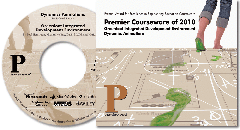
Greenfoot was awarded the 2010 Premier Award for Excellence in Engineering Education Courseware, a prize given to systems that show “high-quality, engaging, non-commercial learning innovations designed to enhance engineering education.” Two systems are chosen annually by Engineering Pathway to receive the Premier Award, a prize that marks outstanding contributions in engineering software. The award was presented at the Premier Award Ceremony at the Frontiers in Education Conference in Washington, D.C., where Ian and Davin from the Greenfoot Team were present to give a demonstration of the system and receive the prize. |
|
Fresh from the press: Greenfoot 2.0

Greenfoot 2.0 has been released now. It offers a number of interesting new features, and might well be worth looking at. Greenfoot 2.0 is a major rework of Greenfoot. Apart from efficiency and stability improvements, it offers a number of new features that allow you to do more than ever before in Greenfoot. Some features, such as sound recording, mp3 playback, better sound control, and unbounded worlds offer more possibilities to scenario writers. Other new functions are aimed at improving the teaching and learning with Greenfoot. Among these are a new debugger and significant new editor functions. A summary of the new features is on mik’s blog. You can download Greenfoot 2.0 from the Greenfoot web site. |
|
Greenfoot on Twitter

The Greenfoot team is gingerly stepping into the age of the World Wide Web 2.0 for Trendy People: we’ve created a Twitter account. Most of us don’t know much about Twitter other than that it is a place where cricketers go to get fined, where people pitch comedy shows and that it is potentially faster than an earthquake – but I’m sure we’ll get the hang of it. If you want to follow us and perhaps suggest useful things we could do on twitter, we’re GreenfootTeam. |
|
Greenfoot 2.0

This month we will be releasing Greenfoot 2.0, a major new version of the software with many new improvements. You can find more information and leave comments in the post in the discussion forum. We would be interested in your thoughts, and look forward to sharing the software with you soon. |
|
Using your Gamepad with Greenfoot
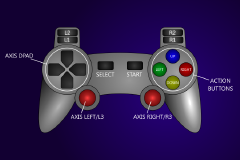
Looking for additional ideas to make Greenfoot programming more interesting? How about connecting your game console controller to your Greenfoot game… We have created a library that allows you to work with your game controller from within Greenfoot. Just plug your USB connected gamepad into your Mac or PC, use the GamePad class in Greenfoot, and off you go. This should work with a variety of devices, including PS2 and Xbox 360 controllers and others of similar design. Details about how to do this are here on the Greenfoot web site. This page provides a detailed description, including sample programs and a template to get you started quickly. This work was done by Joseph Lenton. |
|
Greenfoot book in German
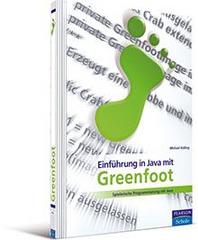
The German translation of the Greenfoot book is nearing completion. This should be good news for young learners in Germany, for whom reading English is often a big stumbling block. The German translation of the book has just been announced in Pearson’s website. The original Greenfoot book has been translated to German for Pearson Studium, the German branch of Pearson Education, by Carsten Schulte, a long-standing member here in the Greenroom. It is scheduled for publication around the end of June. I haven’t held the book in my hands yet, but from what we can see on the website it’s beautifully produced. It has been set and printed in full colour, with coloured syntax highlighting in source code and high quality illustrations. The Pearson website offers a sample chapter (“Probelesen”) for those who’d like to have a look. |
|
Happy Birthday

Happy Birthday, Greenfoot! Today, Greenfoot turns four. Greenfoot 1.0 was released on 31 May 2006. Yes, Greenfoot is really four years old already. If you are interested in its history, there is an online Version History to look at, that shows the dates of all past releases. So, let’s raise a glass and have a quick drink to a bright future. May thousands more kids discover the joy of programming through Greenfoot and other systems in similar spirit! |
|
A Preview of Things to Come
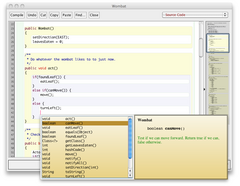
Major improvements are on the way for the Greenfoot editor. Code completion, faster navigation, scope highlighting, and more. The official release is still some time off – find out how you can get a preview at the new features already. Several interesting new features are about to come to the Greenfoot editor. They include:
The changes are not yet available in Greenfoot, but those curious enough can already get a preview at them. Greenfoot shares source code with BlueJ - the editor is one major component that is common to both systems. And BlueJ will be released soon. Preview 1 of the new BlueJ 3.0 is available now, with Preview 2 expected very soon now. Download it and take it for a test drive, and you will see exactly what to expect from the next Greenfoot editor. Any feedback you can provide is welcome. And remember: feedback on the BlueJ editor will also directly improve Greenfoot. Apart from editor improvements, Greenfoot 2 will also include an improved sound API, some integration with graphics editing programs, an option to interactively build and save the initial state of the world, and some other improvements and bug fixes. A release date has not yet been set, but a release in July or August is likely. |
|
The T-Shirt Giveaway Continues

During April, anyone that creates a new resource will get a free Greenfoot T-Shirt (Large or Extra Large) sent to them. So if you have some material that might make a good resource, even if it’s not polished, why not upload it before the end of April and grab a T-Shirt? More details are available in a discussion post. |
|
Greenfoot webinar with Michael Kölling

From Monday, 19th April, to Monday, 26th April, a series of three public webinars starts in which Michael Kölling will present aspects of teaching with Greenfoot. The webinars are open to the public, and everyone with a web browser can participate. Organised by Thomas Cooper and Barbara Ericson, in a cooperation of the GA Tech ICE Program and The Walker School of Marietta, GA, the three webinars will start with an introduction to teaching with Greenfoot, and continue with some more specific issues, possibly brought up through questions and comments by participants. The events will be hosted on the ‘Elluminate’ platform, a system running in a web browser which allows participants to interact with presenters by following the presentation, asking questions and making comments. The three parts of the presentation are scheduled for: Monday, April 19, They will take place live on each of those days at 19:00 GMT. To help with time zone conversions, here are some hints how this translates to some local times:
The event will last one hour. It will also be recorded, and the recordings will be made available later for those who could not join the live session. If you are interested in participating, you can register for the event here. Then, at the right time, go to https://sas.elluminate.com/m.jnlp?sid=2009238&password=M.B66DCFFCF381C2569130E6A5FCD7AF to join the presentation. The three scheduled webinars are a start of a longer series of Greenfoot presentations that Thomas plans to organise in the future (see his announcement and call for participation here). If you are willing to do a presentation later in this series, please contact Thomas at Thomas.Cooper@thewalkerschool.org. |
|
John Chapman - Videos
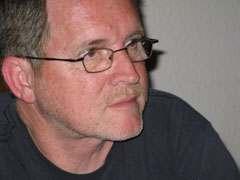
One of the more sophisticated media formats–video–is being used in the resources uploaded by John Chapman. John has produced three videos that accompany the first few chapters of the Greenfoot textbook. The first resource is titled Introduction to Chapter 1…the wombat world. It provides a video that uses the Wombat scenario, and elaborates on Chapter 1 of the Greenfoot book. The second video is available under the title Create new world and use elementary Actor methods and provides an excellent introduction to some of the important Actor API methods. With more than 25 years of experience, John is an experienced teacher. Officially retired now, he still works for the Johnson County Community College, Kansas City, where he team-teachers an online Computer Science course with a colleague. He currently uses Greenfoot in the second half of the semester of that course, following Alice at the beginning. John says: “We are having a lot of fun with Greenfoot. It’s a very creative creation. I love it.” John and his colleague are currently developing material for this course, and he has just uploaded his third video in the series, with the self explanatory title Video…Chapter 2. He plans to upload further resources over the coming semester as they become available. So look forward to more instructional videos in the future! |
|
The Great Easter T-Shirt Giveaway

This Easter, we’re planning to give away some Greenfoot T-shirts. Anyone who creates a new resource between now and the end of April will receive a Greenfoot T-shirt, mailed to wherever they are in the world. Now is the chance for you to upload that worksheet you had lying around, and get a free T-shirt into the bargain. The resource should have some content (no resources entitled “Give me a T-shirt”, please!), but in accordance with the Greenroom philosophy, we’re not worried about the initial quality. The only bad news is that Greenfoot HQ is running short on some sizes – in particular, we’re all out of medium T-shirts! So unfortunately your choice will be between Large and Extra-Large. But it’s free – so create a resource and claim yours. (Maximum one T-shirt per person, while stocks last.) |
|
Cormac McClean - Frogger exercise

Software Development lecturer and Free/Open Source Software advocate Cormac McClean uses Greenfoot as a second semester topic to illustrate inheritance and polymorphism. He posted his “Frogger” exercise, based on a classic 1980s arcade game, to the Greenroom in the first week of the room opening. Cormac teaches Software Development (with Java) and Linux System Administration in Athlone Institute of Technology, Co. Westmeath, Ireland, where he has been working for 11 years. A couple of years ago, he came across Greenfoot and has since incorporated it into his course (which also uses BlueJ). Greenfoot is being used in the second semester, when inheritance and polymorphism are important topics of discussion, to provide illustrations and examples of these fundamental concepts. Cormac says: “I think it’s a useful tool for discussing inheritance and also provides students with programming practice in a very interesting and rewarding environment. I wouldn’t like to try to teach Java from scratch with it, though.” His students start their work with Greenfoot by working with the introductory tutorials, then move on to other workshop type exercises, and finally create scenarios from scratch. His Frogger exercise is based on a famous 1981 arcade game that many people of our generation will know. It has the advantage of being a fairly simple implementation that can result in a fully playable game. Cormac adds: “I prefer to get students to create scenarios from scratch, rather than working with a semi-completed scenario.” The resource description also contains some suggestions for extensions. |
| 61 - 75 of 80 « previous next » |
Created by
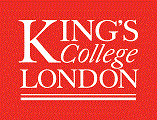 Supported by
Supported by
Copyright King's College London, 2017. Contact us.
